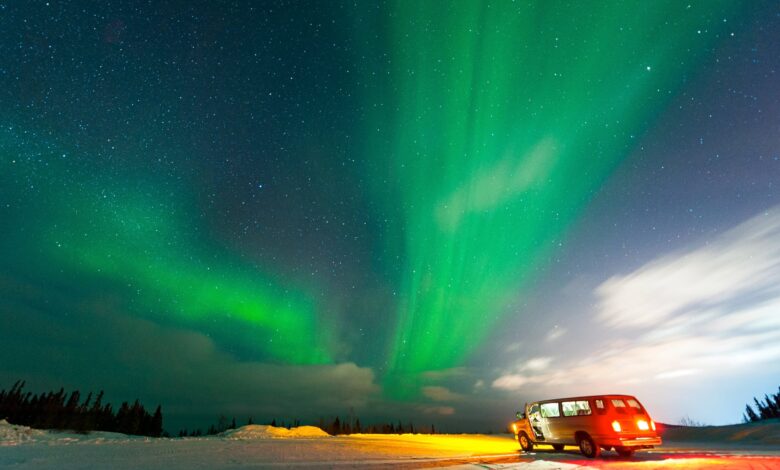How to see the northern lights this week during the solar storm

Those in prime locations throughout Canada and the northern U.S. may be in for a spectacular celestial show this week as a solar storm makes way for the most magical astrological phenomena there is: the northern lights.
The legendary aurora borealis might be visible low on the horizon across northern U.S states, from Washington to Minnesota to parts of New England, as early as Tuesday, according to Space.com.
What exactly is a geomagnetic solar storm?
Over the weekend, the National Oceanic and Atmospheric Administration’s Space Weather Prediction Center issued a G2 (moderate) geomagnetic storm prediction for Tuesday. And yes, these geomagnetic storms are just about as cool as they sound. Occurring when there is a disturbance to Earth’s magnetosphere, they often increase the chances that you’ll catch a glimpse of the aurora borealis.
Solar material from multiple coronal mass ejections has caused this particular storm, according to the SWPC. These large expulsions of plasma from the sun’s atmosphere were first detected Sept. 16.
Since the northern lights happen when electrically charged solar particles collide with the earth’s atmosphere, this CME from the sun and the resulting geomagnetic storm is setting us up for quite the display.
While it’s unclear when, exactly, the lights will be visible, experts are predicting that they could appear as early as Monday night and last into Thursday.

Daily Newsletter
Reward your inbox with the TPG Daily newsletter
Join over 700,000 readers for breaking news, in-depth guides and exclusive deals from TPG’s experts
Related: 10 best hotels to see the northern lights
Where to see the northern lights this week
For those hoping to see the storied dancing lights, a wonderful tool to utilize is the SWPC’s Aurora 30 Minute Forecast, which is a short-term, 30- to 90-minute forecast indicating the location and intensity of the northern lights.
In terms of prime viewing, Canada and the northernmost states of the U.S. (including but not limited to Alaska, Washington, Idaho, Montana, Minnesota, Wisconsin, Michigan and New England) will have the best chance of spotting the lights.
Getting yourself as far away from light pollution as possible and as close to the darkest sky you can find (even better if you’re near a dark sky park, a remote area or a national park) is ideal, and of course, a cloud-free sky will give you the best odds of seeing the show.
Related: Dreaming of outer space? Here are 8 tips for enjoying the night sky from Earth
Luckily for us, even if the skies don’t provide prime conditions for viewing the northern lights this time around, the sun happens to be in a particularly active phase of its solar cycle, so there may be opportunities to catch a glimpse of these mysterious lights again soon.
Related reading:




